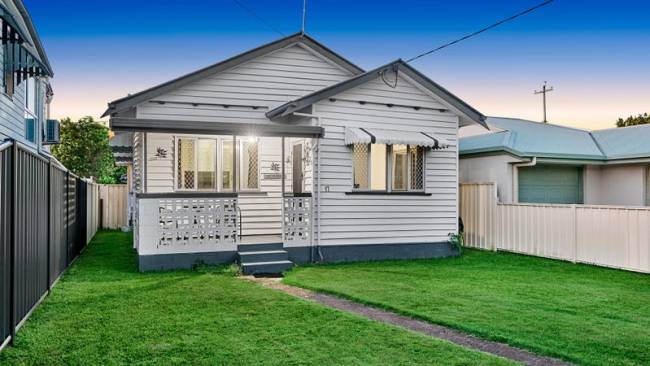Home improvement, repairs and renovations: All your toughest questions answered
For some reason, not everyone might love your pet as much as you do – here’s how to make sure that doesn’t blowback on you or your home.
Property
Don't miss out on the headlines from Property. Followed categories will be added to My News.
The Fixer is here to answer all your home improvement, renovation and repair questions.
Email us at athome@news.com.au
We love them dearly but pets need house-training. Try these tips for meeting their needs and your expectations.
If there was one trend that defined last year’s lockdown, it was the explosion in pet ownership. For a while there, animal shelters were inundated with enquiries, leading organisations like the RSPCA to only allow visits by appointment to limit numbers. By now though, all those cute kittens and puppies are becoming adults and the reality of the lifelong commitment to a fur baby has kicked in.

While most are happy to embrace their new family member, others are finding the challenge of keeping their home looking clean and smelling fresh a tricky one.
Q. I love my dog but he makes the whole house smell. What do I need to do to keep the house smelling fresh?
A. Many of us have had that experience of walking into a house where, without even sighting one, you know a dog lives there. Unlike cats, who take care of their own grooming needs, dogs need regular washing – especially after an adventurous visit to the park, beach or local waterway – if their special smell is to be kept under control.
PETschool state trainer at PETstock, Mandi Wright, says dogs need to be washed at least once a month and groomed about once a week to stay on top of their hygiene.
“It can depend on what you feed them but mainly it is about grooming or cleaning them,” she says.
“Dogs go to the park and they can bring all those smells home on their feet but if you are washing your dog about once a month and brushing them regularly, you don’t need to do much else. A dog’s coat will regulate itself quite well.”
If you’re finding it a bit much to get up close and personal with your pooch, they might also need some dental care.
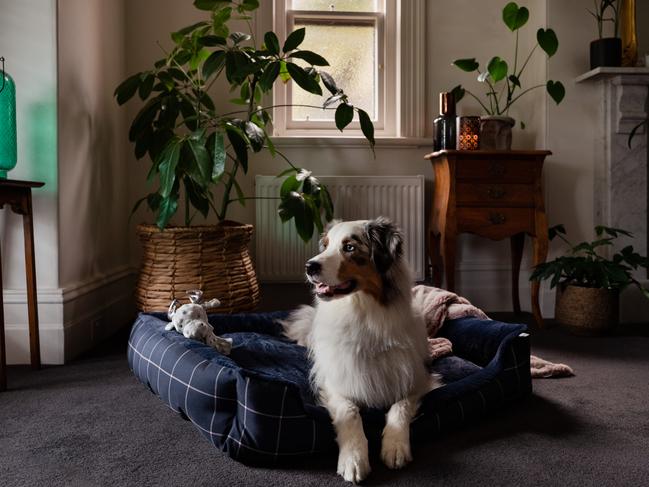
“They can develop bad breath so keep up the dental treatments, either with dental treats or a visit to the vet,” she says.
For pet bedding, look for products that can be thrown in the washing machine altogether or have washable slip covers that can be dried on the line.
Mandi says fluffy bedding is often appealing for dogs and even cats, who are notorious for choosing their own spot to sleep. As is the case whether you have pets or not, opening the doors and windows on warmer winter days will let the fresh air through and decimate smells.
Q. My cat has a litter but she doesn’t always use it. Why is that? And why does she keep going back to the same spot, even after I have practically disinfected it?
A. What can I say? Cats have standards. If the litter is not being changed regularly enough, it’s not private enough or it’s too close to her food, your cat may be reluctant to use it.
As a general rule, Mandi says you should scoop out any ‘clumps’ in the litter on a daily basis and then completely change the litter once a week. There are also specially formulated sprays available for litter trays that don’t just mask the odour but break it down so that even a cat’s highly trained sense of smell will have a hard time detecting it. If it’s still happening, it might be worth digging a little deeper. Cats can toilet in the house sometimes when they’re under stress or they’re unwell.

Q. We recently adopted the most adorable puppy but it keeps making a mess in the house. It’s driving me nuts. How can I stop it?
A. We all know puppies are super cute but it’s easy to forget that they are, in fact, babies. They need regular attention. Mandi says it’s not unreasonable to take a pup outdoors every half hour in case they need to go.
“Dogs don’t get bladder control until they are at least 16 weeks old,” she says.
“Never tell a dog off when they toilet in the wrong spot because they might start to hide it or hold off for too long which can cause a bladder infection. Always praise the dog when they are toileting in the right spot. Also, look out for body language like pacing or turning in circles which might be a sign the dog needs to toilet.”
Products like the Pet Loo from PETstock, which is a portable toilet system for cats and dogs, can be a real help when toilet training your dog.
As for fur, I met someone once who did not know how much fur her golden retriever shed until she moved from a gated expat community, where a maid vacuumed every day, back to the real world. She was shocked. Whether you have a cat or dog, a top quality vacuum cleaner is your friend. Shifting from a basic model to something designed with pets in mind – Miele and Dyson both have one – can be a revelation.
“Quite often you don’t realise the amount of dust and hair that comes out of the carpet,” says Mandi.

KITCHEN RENOVATIONS: YOUR TOUGHEST QUESTIONS ANSWERED
More than any other room in the house, the kitchen is the toughest to renovate. Aside from the multitude of decisions to be made about the colour and shape of splashback tiles, benchtop materials and tapware, there are some very practical considerations about the basics, such as benchtop thickness, the work triangle and even waste management.
While I’ve renovated a couple of kitchens, this is definitely one topic where it’s best to defer to the experts.
So I spoke to Charlotte Riggs from bespoke cabinetmakers Bondi Kitchens and Kylie Forbes from kitchen systems provider, Cantilever Interiors.
How high should your benchtops be? What bench thickness is on trend?
Charlotte: The standard height is 900mm however, we are growing taller collectively so some homes are opting for anywhere up to 950mm high. Benchtop thickness is very personal. Stainless steel in a slender 10mm thick is very popular right now but beefed up marble around 60mm is also highly sought after.
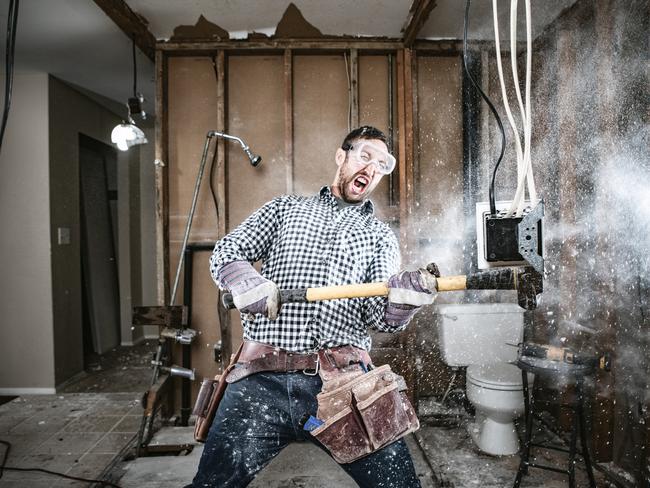
How much distance should there be between the rear bench and island bench?
Charlotte: Ideally, you should allow for one metre or thereabouts for a comfortable thoroughfare, depending on the size of room but it can be 950mm to 1100mm. It’s really important to get this right for the flow of the space to feel good.
How high above the stove should the rangehood exhaust be?
Charlotte: This is very specific to your cooktop and rangehood installation specifications, however, a general average is about 600mm.
What’s the perfect height for a pendant light over an island bench?
Charlotte: The pendant should sit above your eye line. It’s the perfect offset from the benchtop and ceiling height, allowing for a sense of openness while you’re entertaining.
What is the right height for island stools?
Charlotte: If your island bench is 900mm high, always have a minimum of 300mm overhang with the height of the stool to be about 600mm tall. You’ll want a comfortable amount of space between your thighs and the counter top. The height of these stools should not be confused with bar stools which are often 70cm to 80cm high.
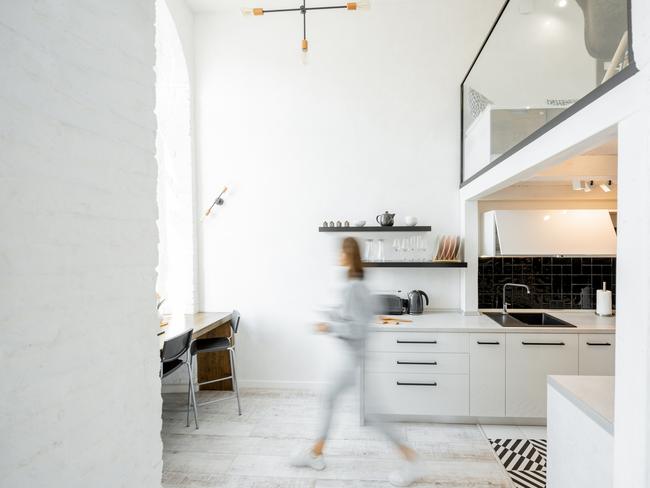
What is the maximum drawer depth?
Charlotte: About 500mm depth is the golden rule. It is the standard size for cutlery inserts and drawer accessories but you can also modify them according to what you’d like to put in the drawer. Generally speaking a cabinet depth / back bench depth is 600mm comfortably.
What about the pantry?
Charlotte: Base drawers should be around 500mm deep but also can be taller for standing tall items such as sauce bottles and then shorter for smaller shelf goods like spices and canned goods.

What are the most popular styles of kitchens right now? Is it preferable to have a wall kitchen or one with an island bench?
Charlotte: The classic Shaker style is always popular however, we can put a modern spin on it by slimming the profile of the cabinets. For a less feminine look, a warm timber veneer is equally as popular. The rich grain feature adds effortless elegance to the living space. If the size of the room permits, an island bench is always a good idea.
Are most people now looking for the kitchen to blend into an open plan living area?
Charlotte: Yes, absolutely. The modern kitchen is now a seamless blend of food preparation zones and social interaction space, given food and drink are paramount to creating a sense of community. More of us are thinking of kitchens as living spaces – it’s a focal point for togetherness.
How do you design for flow in the kitchen? Is there an expectation now that there will be more people in the kitchen at the same time?
Kylie: Allowing for concurrent activity is the key to designing a practical kitchen. We design with the presumption there will be more than one person using different functions of a kitchen space at the same time. Allowing for one person to prepare food while another is cleaning, drying, storing or serving food is a more realistic interpretation of activity than the kitchen work triangle diagrams of old.
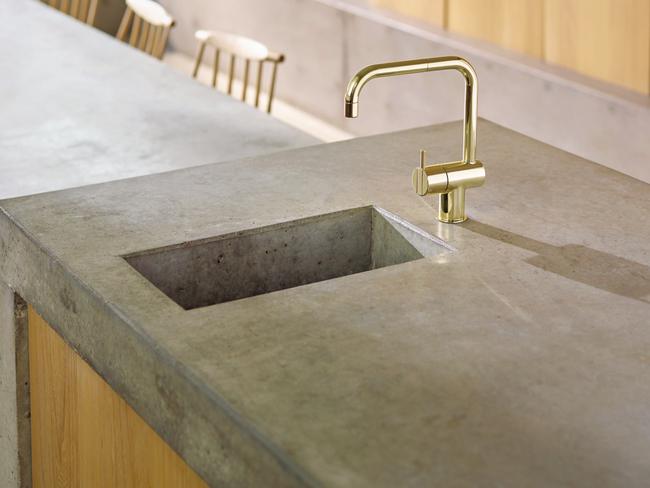
What is behind that trend for integrating dining spaces into the island bench? Is it a natural progression from the breakfast bar concept?
Kylie: Dining table integration into an island setting recognises the natural socialisation now occurring in kitchens. A table at one end of the island, or in front, allows for easier interaction than a line of stools at a bench and separates dining from the serving zone.
Have separate bins for recycling and compost become standard fixtures in kitchen design now?
Kylie: Responsible waste management is increasingly important, and decent accommodation for recycling, biological and general waste, soft plastics and composting simplifies the whole process.
FOOLPROOF TIPS FOR A KID’S ROOM MAKEOVER
Preparing your home for a baby is an exciting time. Here’s a guide to balancing the pretty with the practical.
One of the joys of preparing for the arrival of a new baby is getting the nursery ready.
For first time parents, it’s a great way to come to terms with a major shift in your life.
While it’s so easy to get swept away by beautiful images of pretty bedrooms on Pinterest, practicality and safety must be heeded. Choose the best and safest cot you can afford and think about its proximity to cords from blinds, curtains or lamps that may put toddlers at risk. A sturdy set of drawers can serve well as a change table and make sure comfort trumps good looks when selecting a nursing chair.
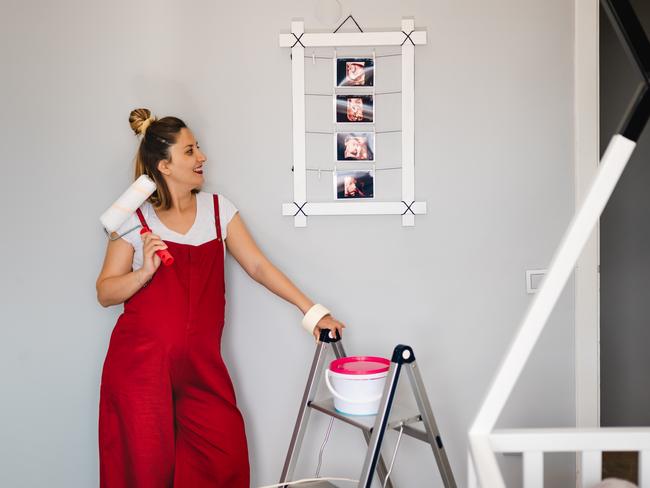
Q. We’re having a girl. I want to paint the room pink but my partner disagrees.
A. If you’ve shared that you’re having a girl with family friends, you’re probably already making space for a steady stream of pink clothes, toys and furnishings. If you choose to paint the walls pink as well, that’s a lot of pink.
Decorators are accomplished at creating soft, gender-neutral palettes for nurseries, and it means the room will age with the child and not date.
I’d strongly suggest going with a neutral colour for the walls, a colour that will complement the pink that will inevitably come your way. Soft greys, light blues or greens work beautifully with pink and provide a soothing environment ideal for (hopefully) peaceful nights.
Going with a neutral wall colour will also allow you to go to town with pink floor coverings and prints for the wall, as well as bedding for the cot, if you choose to. Keeping the walls neutral makes later updates easy too.
Q. Is it okay for me to be prepping and painting the room while I’m pregnant?
A. If your home was built before 1978, there’s a chance the paint contains unacceptable levels of lead. Even if you’re doing nothing more strenuous than washing down the walls, I’d leave the job to someone else. As a general rule, it’s a much better idea to paint over the existing lead paint rather than scrape or sand it back, as long as it isn’t flaking.

If it is flaking, call in the professionals to prepare and paint to minimise your exposure. Some women are comfortable wielding paint brushes and rollers during pregnancy but if you are not, this is the time to take on a supervisory role. Look for paints with no or low VOCs (Volatile Organic Compounds). Paints with VOCs release solvents (that new paint smell), which can cause headaches or dizziness.
Q. How do we furnish the room so that it grows with our child?
A. Some people relish going all out decorating and furnishing their baby’s room with age specific wallpaper, murals and indoor play houses. But changing a room up as your baby becomes a little girl or teenager can be a tedious and expensive exercise.
Flexible designs are one solution. For example, you can convert specific cots into a bed or a highchair into a booster seat. They generally cost a little more but can save you in the long run. Purpose-made baby change stations are also great but a good set of drawers with a removable change mat gives you more options as your daughter grows. Make sure you attach any large pieces of furniture to the wall with brackets to prevent them tipping. Whatever you decide, in terms of what’s in or out, leave room for your child’s personality to shine through, rather than you decorating based on what you think is stylish or what fits in with the rest of the house. We all need room to grow.

Don’t miss the new-look At Home magazine in your Saturday newspaper or visit us online At Home.


